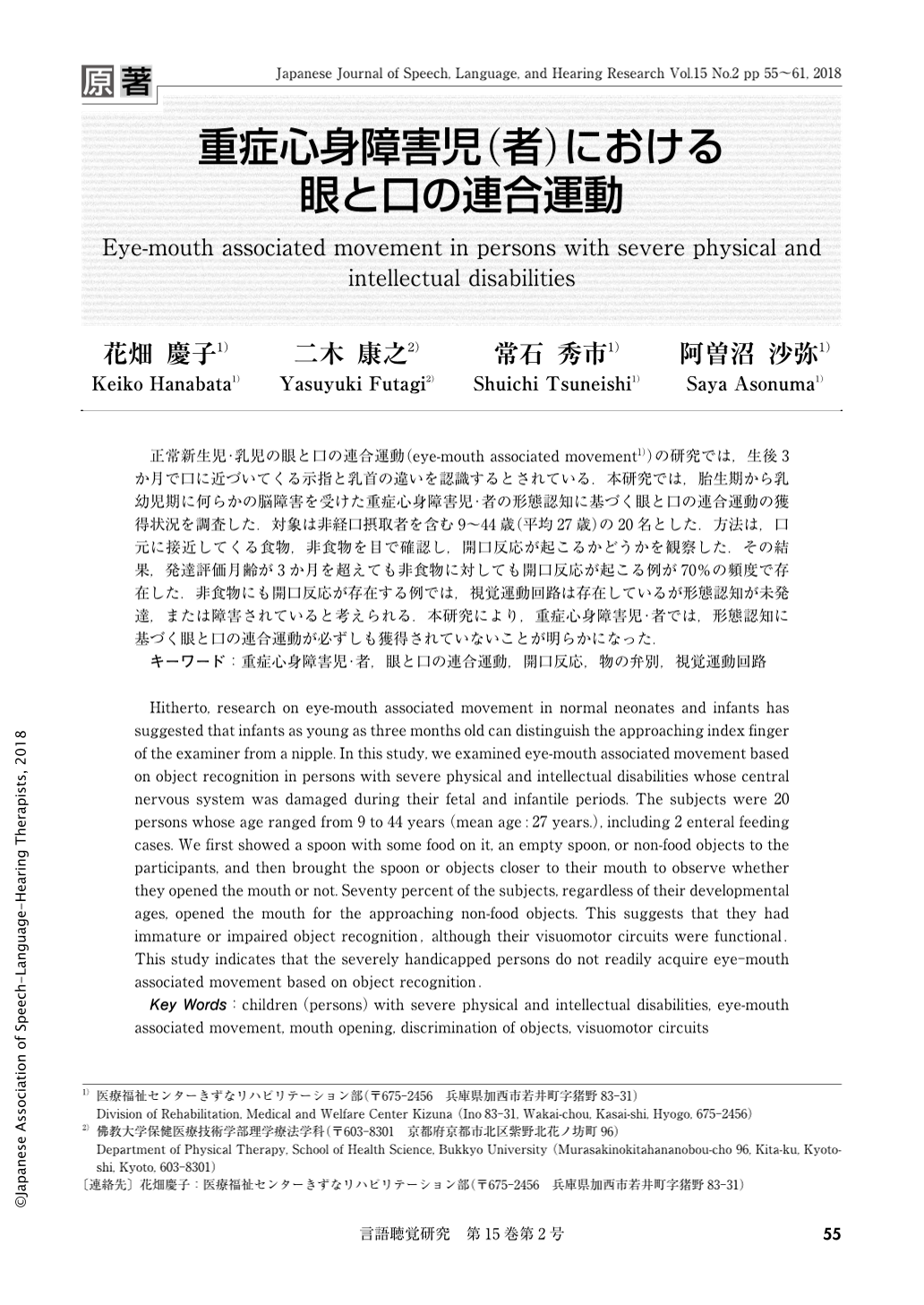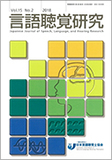Japanese
English
- 有料閲覧
- Abstract 文献概要
- 1ページ目 Look Inside
- 参考文献 Reference
正常新生児・乳児の眼と口の連合運動(eye-mouth associated movement1))の研究では,生後3か月で口に近づいてくる示指と乳首の違いを認識するとされている.本研究では,胎生期から乳幼児期に何らかの脳障害を受けた重症心身障害児・者の形態認知に基づく眼と口の連合運動の獲得状況を調査した.対象は非経口摂取者を含む9〜44歳(平均27歳)の20名とした.方法は,口元に接近してくる食物,非食物を目で確認し,開口反応が起こるかどうかを観察した.その結果,発達評価月齢が3か月を超えても非食物に対しても開口反応が起こる例が70%の頻度で存在した.非食物にも開口反応が存在する例では,視覚運動回路は存在しているが形態認知が未発達,または障害されていると考えられる.本研究により,重症心身障害児・者では,形態認知に基づく眼と口の連合運動が必ずしも獲得されていないことが明らかになった.
Hitherto, research on eye-mouth associated movement in normal neonates and infants has suggested that infants as young as three months old can distinguish the approaching index finger of the examiner from a nipple. In this study, we examined eye-mouth associated movement based on object recognition in persons with severe physical and intellectual disabilities whose central nervous system was damaged during their fetal and infantile periods. The subjects were 20 persons whose age ranged from 9 to 44 years(mean age: 27 years.), including 2 enteral feeding cases. We first showed a spoon with some food on it, an empty spoon, or non-food objects to the participants, and then brought the spoon or objects closer to their mouth to observe whether they opened the mouth or not. Seventy percent of the subjects, regardless of their developmental ages, opened the mouth for the approaching non-food objects. This suggests that they had immature or impaired object recognition, although their visuomotor circuits were functional. This study indicates that the severely handicapped persons do not readily acquire eye-mouth associated movement based on object recognition.

Copyright © 2018, Japanese Association of Speech-Language-Hearing Therapists. All rights reserved.


